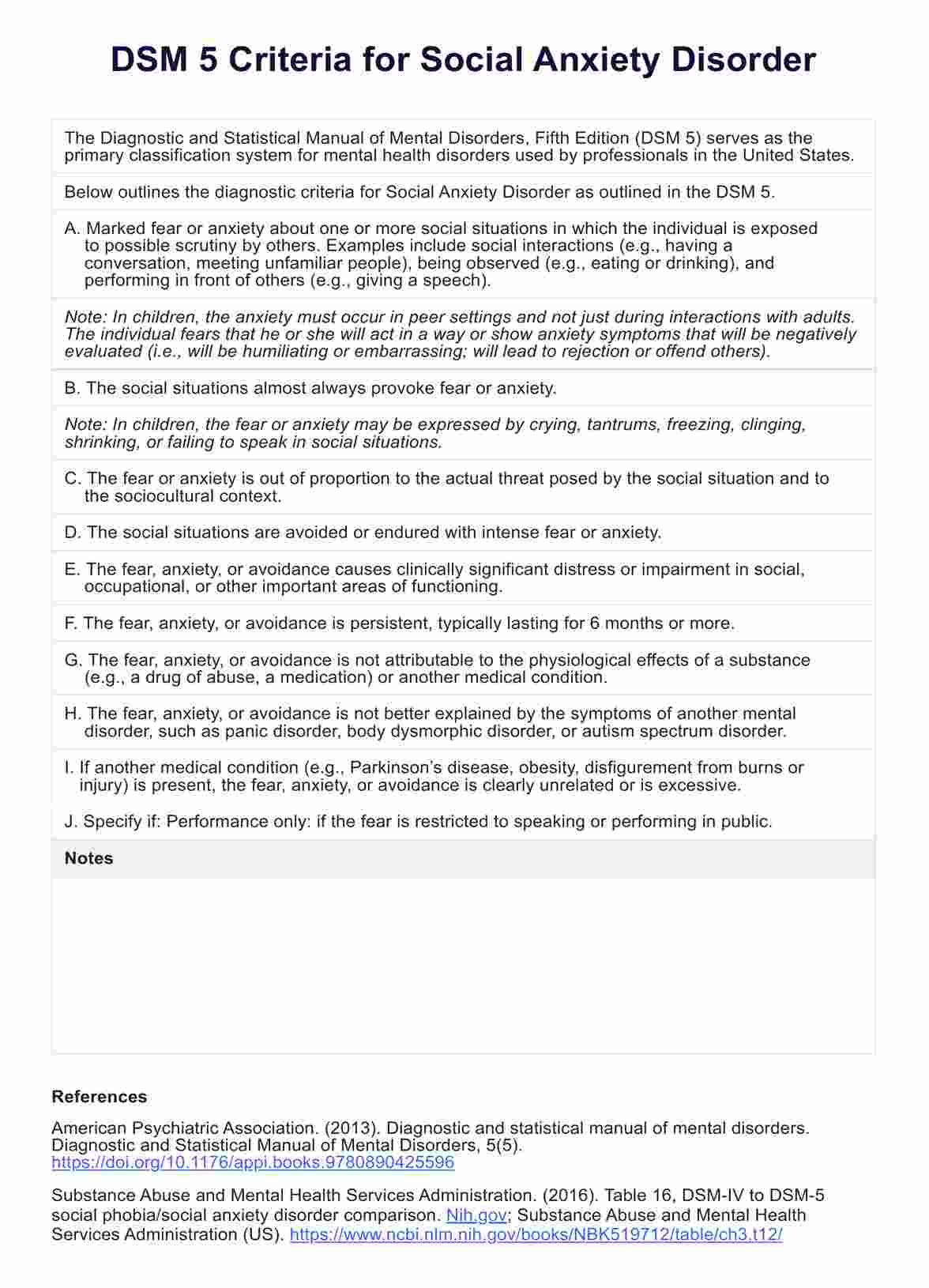While some individuals may experience periods of improvement, social anxiety disorder typically requires treatment to manage symptoms and improve quality of life effectively.

DSM 5 Criteria for Social Anxiety Disorder
Discover the DSM 5 Criteria for Social Anxiety Disorder and learn more about the symptoms, diagnosis, and treatment options. Download for free.
DSM 5 Criteria for Social Anxiety Disorder Template
Commonly asked questions
No, social anxiety disorder involves intense fear and anxiety in social situations that can significantly impact daily functioning. In contrast, shyness is a personality trait characterized by discomfort in social situations that may not necessarily impair functioning.
It is advisable to seek professional help if your social anxiety interferes significantly with your daily life, relationships, or ability to function effectively at work or school.
EHR and practice management software
Get started for free
*No credit card required
Free
$0/usd
Unlimited clients
Telehealth
1GB of storage
Client portal text
Automated billing and online payments











